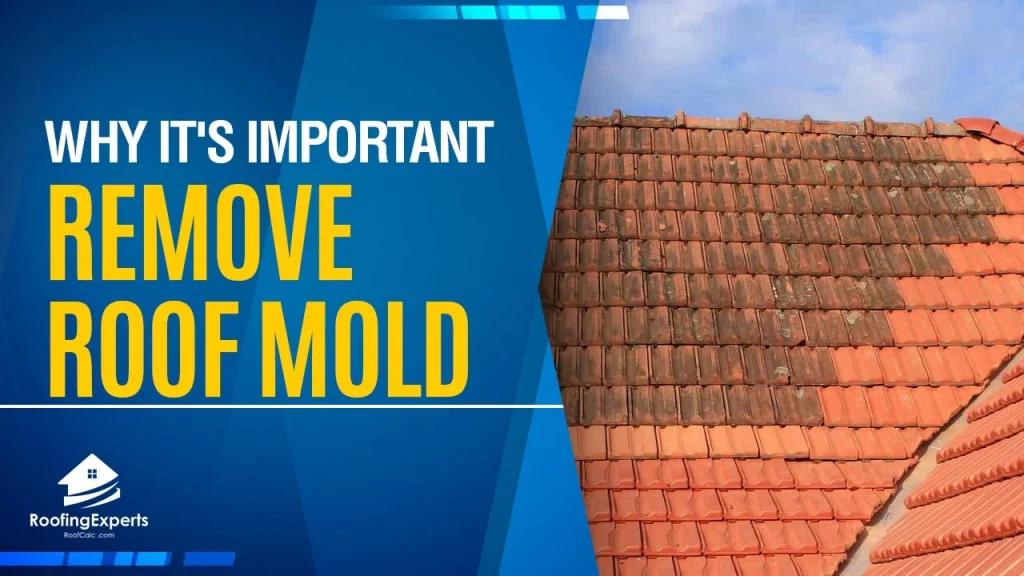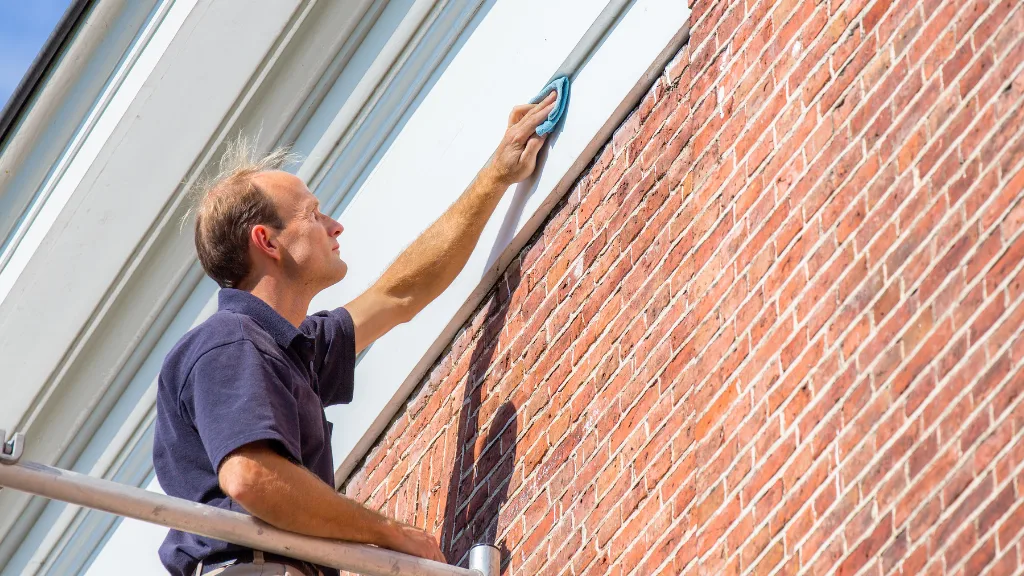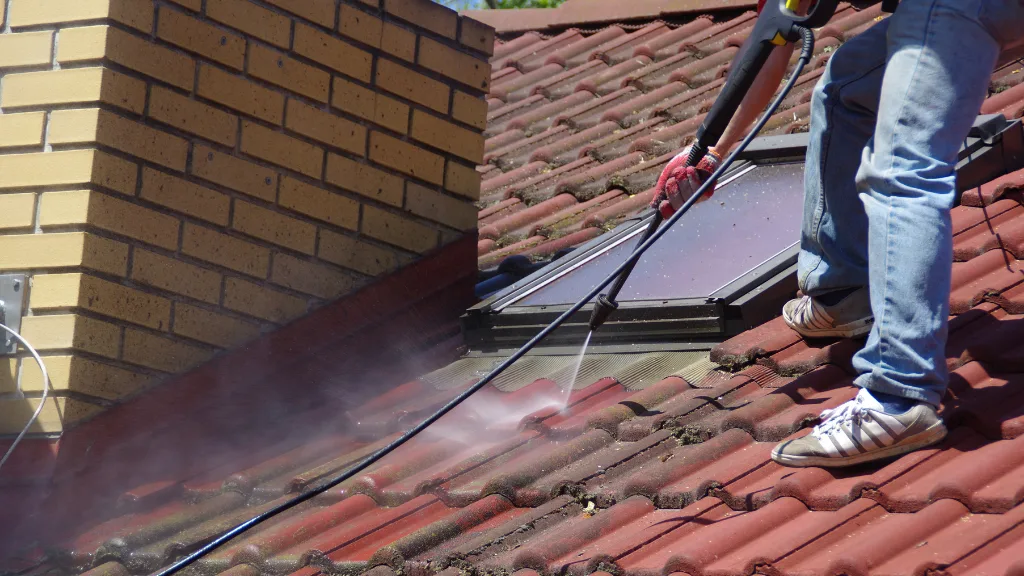
You might not know it, but there’s a chance that you have roof mold in your home. Roof molds could be hiding in the attic. Mold is dangerous for many reasons, and therefore needs to be removed as soon as possible.
In this article, we will go over some of the most important things about roof mold removal and why it’s so important to take care of this problem quickly!
What Are Roof Molds?
Molds are fungi that can be found all over the world. They tend to grow on organic matter such as plants and food, but they also love dark warm places like your attic or basement!
Mold comes in all shapes and sizes, but the most common roof mold is black. It can be hard to spot it on dark surfaces like your attic floor or basement walls, so you might have a problem before even knowing about it!
How To Find Roof Mold?
The first step to removing roof mold is finding where exactly the infestation is. In order to do this, you’ll want to get a bright flashlight and head up into your attic or basement.
Once in the room that has roof mold, take off any protective equipment like gloves and goggles because you will need access to all of your senses!
Next, spend some time looking around for signs of black stains on the surfaces of your room. If you find something, take a sample with tape and check it under a black light in another room to confirm that it’s roof mold!
What Causes Roof Mold?
Roof mold is caused by moisture, so the best way to prevent it from growing is by controlling your humidity levels!
Mold colonies or black stains on roofs are a possible sign of humidity in the structure. The mold may rise from soaked areas such as leaky pipes, overflowing drains, clogged gutters, and downspouts; also from condensation on walls and ceilings.
During certain seasons, it is typical to notice an increase in mold on roofs. Roof design, exposure to sunlight, and the amount of rainfall are all elements that affect mold growth.
Roof Design – The design of the roof is important to determine how likely it is for molds and mosses to grow on roofs.
Steep slopes will probably not allow mold colonies as they would dry quite quickly, whereas flat roofs with a longer time spent in the shade are more prone to issues.
Proper Drainage – A roof needs efficient drainage so that rainwater does not remain anywhere. If the drainage is working properly, rainwater will run off immediately and will reach gutters quickly.
This way it can be directed to downspouts leaving no opportunity for mold growths on roofs.
Sun Exposure – Roofs that are mostly in direct sunlight do not allow molds to grow as they dry fairly quickly.
On the other hand, roofs that are mostly covered by trees or buildings can stay very humid and promote mold growth if proper sunlight exposure is not provided.
Rainfall Amount – The amount of rainfall during a certain period is directly related to the risk of molds on roofs: it does intensify roof leaks and increases humidity levels in building cavities.
Mold growths are thus more common in regions where rain is abundant throughout the year.
Water damage can be caused by several factors. Sometimes it might be beyond one’s control, but in most cases, roof owners may have prevented water damage by taking the appropriate actions beforehand.
If you have roof mold or if someone in your family has asthma, you might want to consider buying a dehumidifier. This will decrease the amount of water vapor in your home and keep roof molds away!
When To Remove Roof Mold?
Roof mold thrives in a shady and moist environment. Five reasons to remove mold and moss from your roof are listed here:
Molds Aren’t Pleasing to the Eyes – If you’re not a fan of mold, then this reason alone is enough to help you remove those roof molds! Mold is a black fungus that creates ugly stains on roofs.
Mold Invites Rodents – Roof mold attracts rodents. Roof rats and other vermin use gutters to get to the top of a building.
Roofing materials are commonly damaged by rodents, causing them to become soft and decaying. The birds may even take pieces of your roof to make a nest.
Mold is Persistent – Mold is a fungus that can persist in many places. The more entrenched mold becomes on your roof, the less likely it is to be removed and controlled.
Clean your roof before the mold becomes so bad you need to hire a professional. The sooner you treat a mold problem, the better.
Mold Can Spread – Mold spores travel through the air and land on surfaces. If you let roof mold sit, it can spread to other places in your home that are warm and moist like a bathroom or kitchen!
Mold on your roof can wash off in the rain and be tracked into your home. If there is a great deal of moss on the roof, mold can penetrate roofing materials. Mold can make wood rot and erode shingles.

Why You Should Remove Roof Mold?
You should remove roof mold right away when you spot signs of them growing on any surface (walls or ceiling) inside your home!
If left untreated, roof mold can spread to other areas of your home and potentially cause health problems.
There are many reasons why you should remove this problem as soon as possible once it is identified! We will now go over some of the most important ones:
Roof Molds Can Cause Allergies
Black roof mold is a common allergen that can trigger asthma and other respiratory problems.
If you or someone in your household already suffers from allergies, removing the black stains right away will help reduce their symptoms and improve air quality!
Roof Molds Can Cause Headaches
Due to the fact that roof mold spores are often released into the air, they can cause headaches in some people.
In addition to this, if you have been exposed to high levels of these molds over a long period of time it might lead to serious health problems such as lung cancer or even death!
Roof Molds Can Cause Damage To Your Home
Mold can cause serious damage to the surfaces that it grows on. Unfortunately, this means that if you don’t remove roof mold as soon as possible, they will destroy your home’s walls and ceiling over time!
If you want to prevent this from happening, it’s important to find roof mold as soon as possible and remove it.
Roof Mold Is Dangerous
Roof mold needs to be removed because of the toxins that are released into your living space when it starts growing. For people who suffer from respiratory conditions like asthma, exposure to these chemicals could be fatal!
It’s also important to remember that roof mold can lead to health problems like headaches, respiratory infections, and even cancer.
It is therefore very dangerous because it could affect you or the people close to you without them knowing about it until it is too late!
Final Thoughts
There are a number of factors that will determine when it is the proper time to have your roof replaced. One reason may be that you have mold on your roof.
The presence of mold anywhere in your home should be considered a major concern and therefore, looked into further.
If there is a problem with mold on your roof, then you need to have it removed immediately to prevent further damage.


